It was my second last night in Toledo before heading off to Zaragoza causing me to feel a little angst because there was so much more to see in Toledo. I did a little planning that night after my jaunt around the town before dinner and there was no way I could see everything before I left, so I reluctantly made a few priorities….maybe at the back of my mind I thought I’d leave a few things out in the hope that this would force me to return in the future.
Like I said in Part 1 of my Toledo visit the town has a different atmosphere in the evening. As you walk through the narrow streets which wind through the town, very few are perpendicular so you may take longer to get from A-to-B, making each trip more of an experience subtly forcing you to absorb your surroundings, I like that.
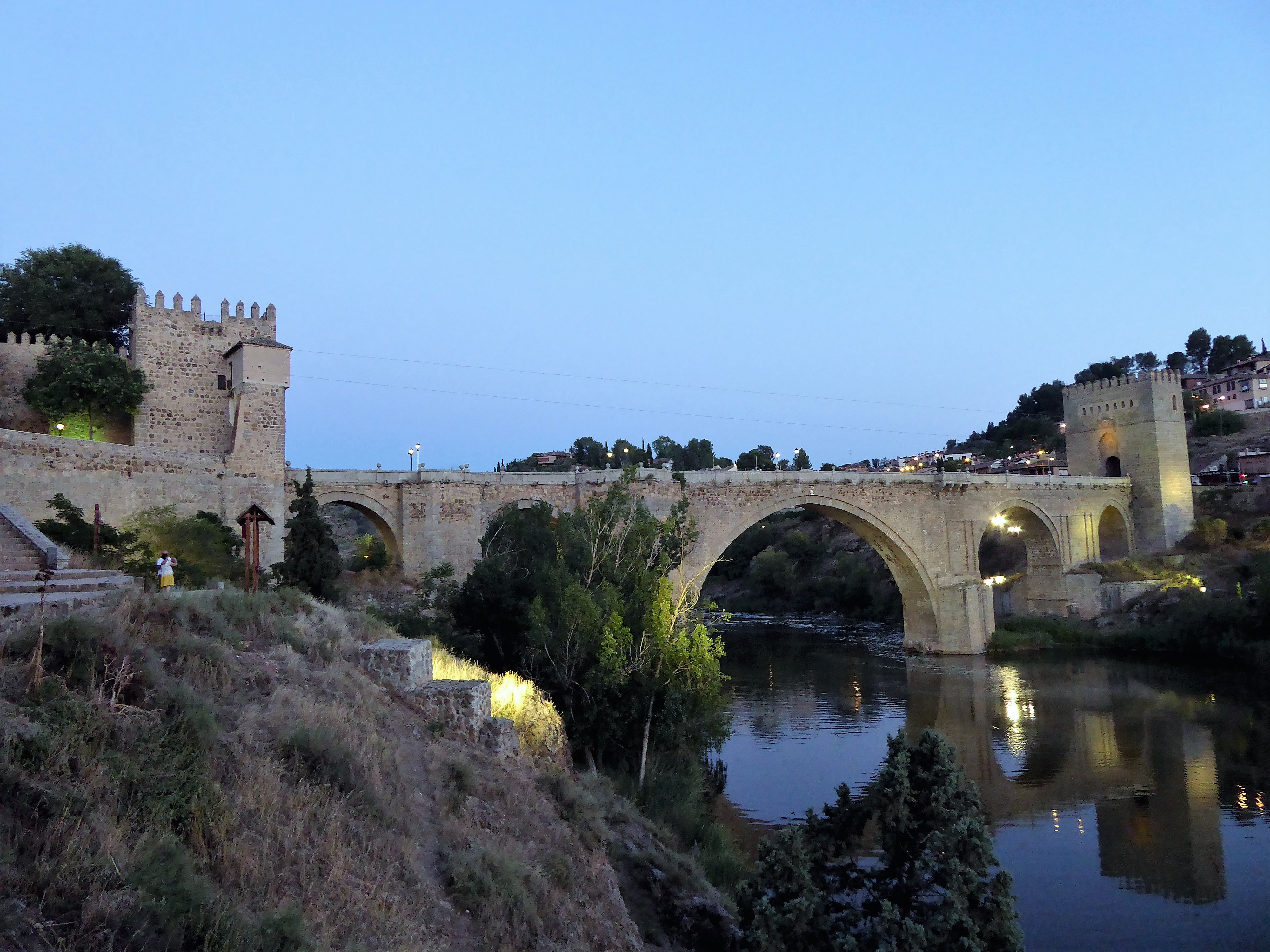
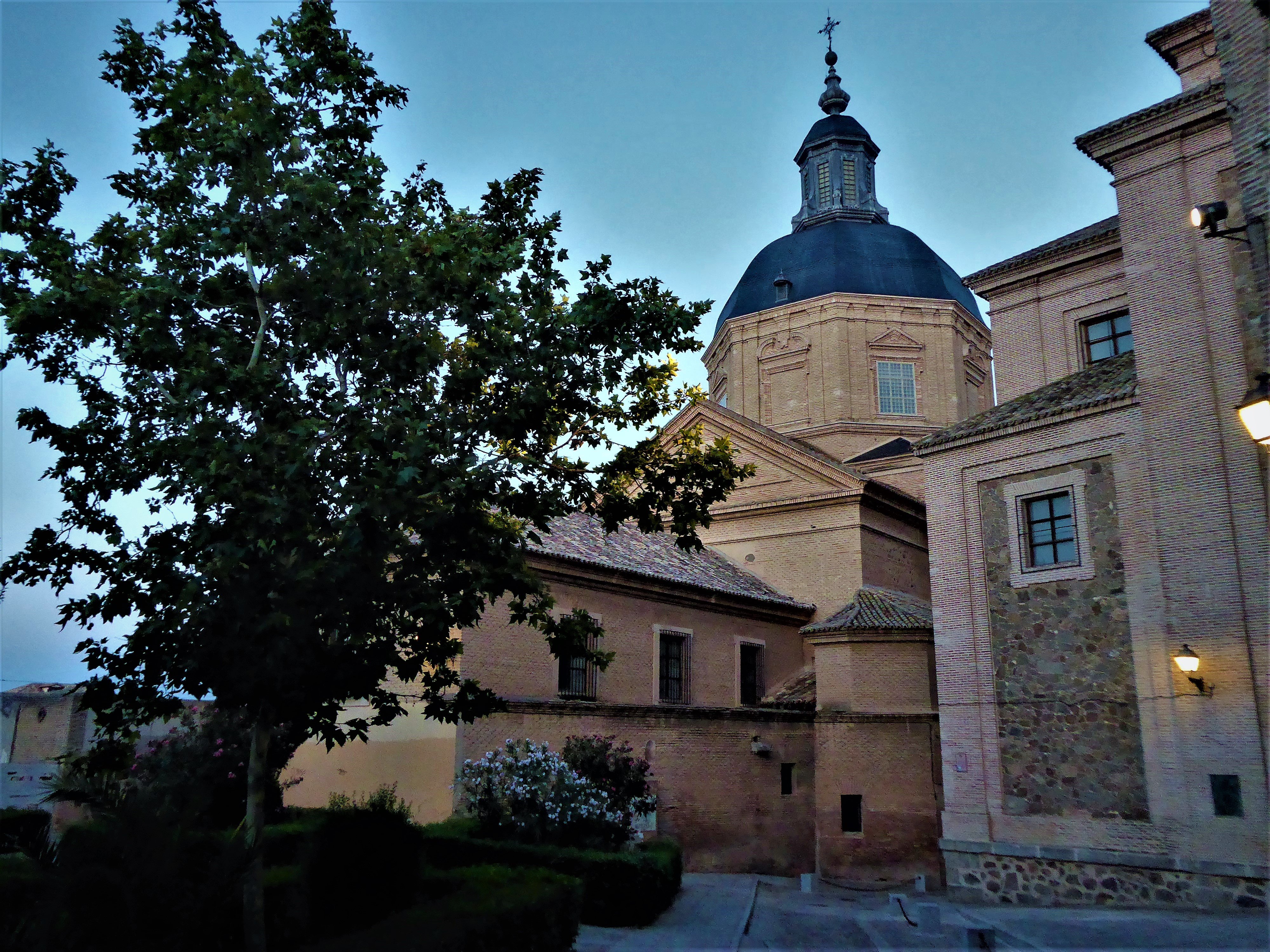

Museo del Ejercito / Army Museum of Toledo/ Alcázar of Toledo
The owners/managers at my hotel La Campana told me that the Alcazar is free on Sundays so that was my first port of call in the morning. Now a museum, it dominates the landscape with is size and quite out of character to the rest of the buildings in Toledo. In the Roman era (3rd century) it was a palace later to be restored by Charles I (Holy Roman Emperor Charles V) in the middle of the 16th century; the word “restoration” used very lightly because nothing of the Roman structures are visible, at least above ground. It also had an important role in the Spanish Civil War, bloody too! – worth a read if you like that sort of thing. Now a large and very comprehensive museum of Toledo’s history, a visit well worth it and takes the best part of a morning or afternoon.


Since excavation was done, the basement now exhibits the Roman structures below; an extensive Roman necropolis over hundreds of years – buildings, built on top over older structures over and over. The Alcazar tour seamlessly mixes with the Army Museum, the latter covering the Army from before the Romans through to the present. The Alcazar is a very large structure and the museum too so I’m taking the easy route and instead of writing an anthology of everything I thought I just put a few photos instead – doubt I’d to justice to over two thousand years of history on one or ever a few A4 pages.


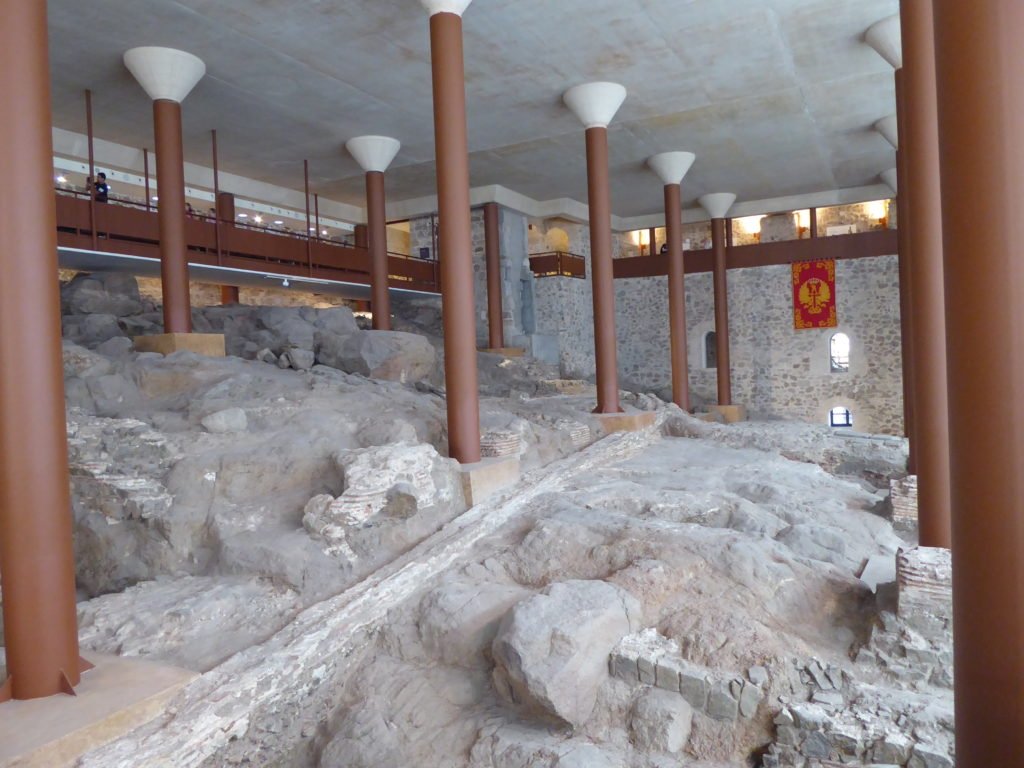
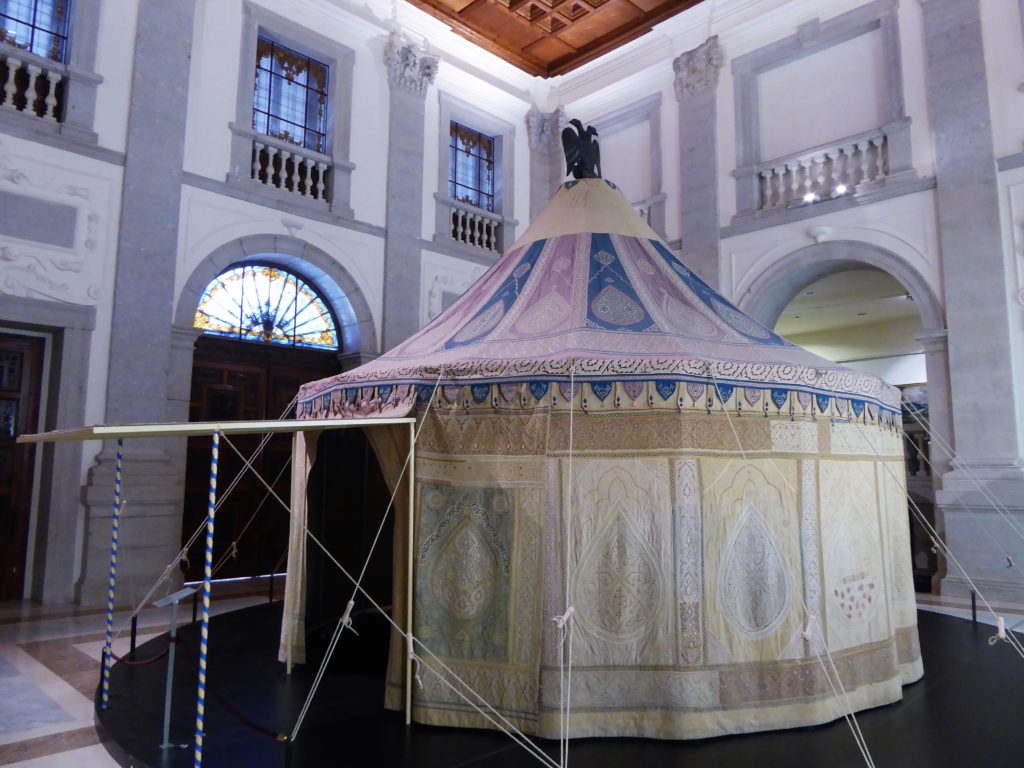
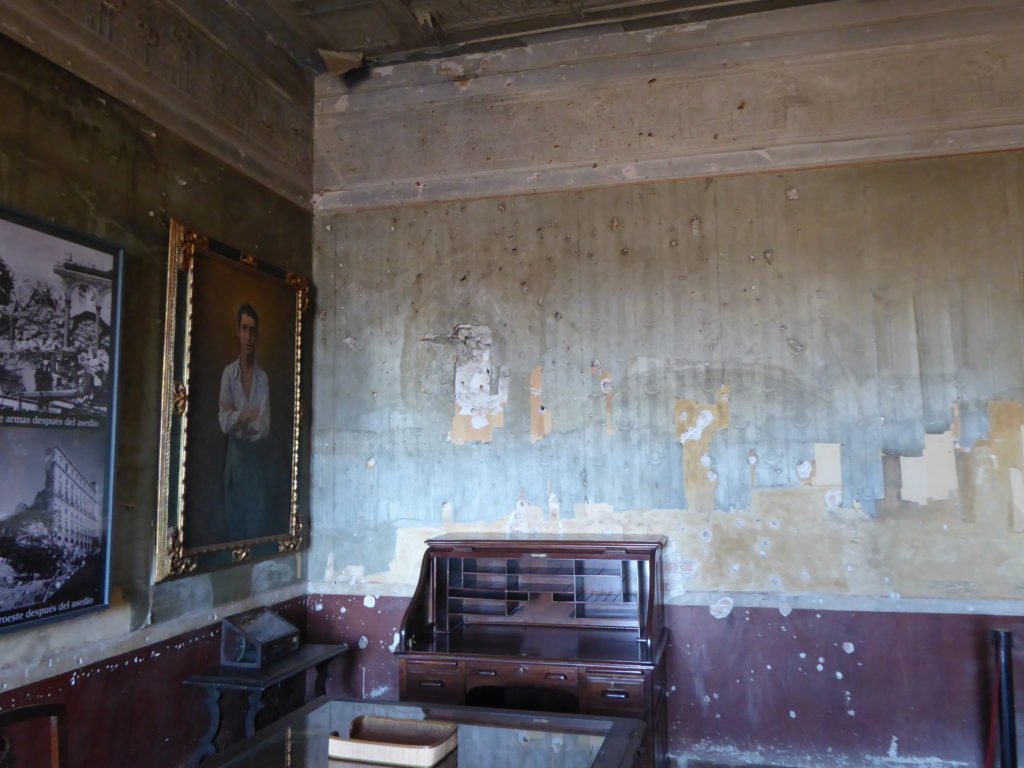
Monastery of San Juan de los Reyes / Monastery of Saint John of the Monarchs / Monasterio de San Jaun de los Reyes
This old monastery is based in the old Jewish Quarter and construction was completed in 1507 (it was originally called San Juan de la Reyna). Its original purpose was to be the mausoleum of King Ferdinand II of Aragon and Queen Isabella I of Castile who were the founders and gave the order for its construction – never used as the monarch’s mausoleum, this was moved to Granada after its reconquest in 1492 (real pity I never got the time to go to Granada, will have to add it to a future list). Franciscan friars used it till 1809 at which time it was badly damaged by Napoleon’s army when they occupied Toledo, to be abandoned in 1835. A extremely protracted restoration commenced in 1883 only to be completed in 1967, the monastery was restored to the Franciscan friars in 1954.
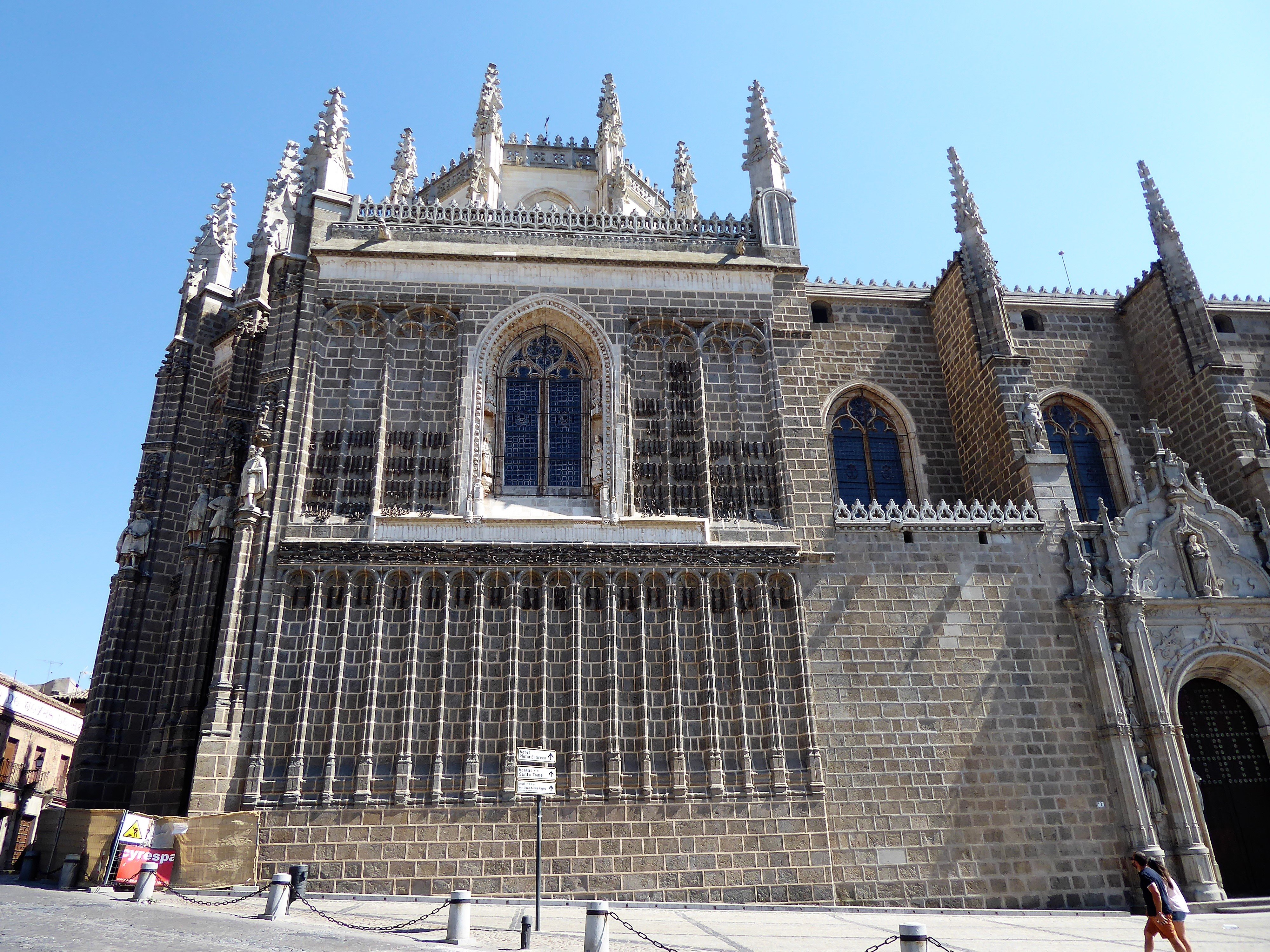
In Part 1 of my Toledo blog I included a picture or the church of the monastery taken just after dusk, a lovely example mixing the Gothic styles of Spanish and Flemish. From the outside and about halfway up some of the wall there are large linked cast iron chains that hang vertically and horizontally, I was disappointingly informed that they do not know their purpose or if they had one at all. There are (apparently) quite a few churches with chains on the outside with the consensus being they were for decoration, doesn’t quite fly with me. My uneducated thoughts on this are a combination of decoration and used to hang banners, flags or colours (state, province, monarch) from them, at least that’s what I like to think; a church covered with brightly coloured material on holy days or special occasions.
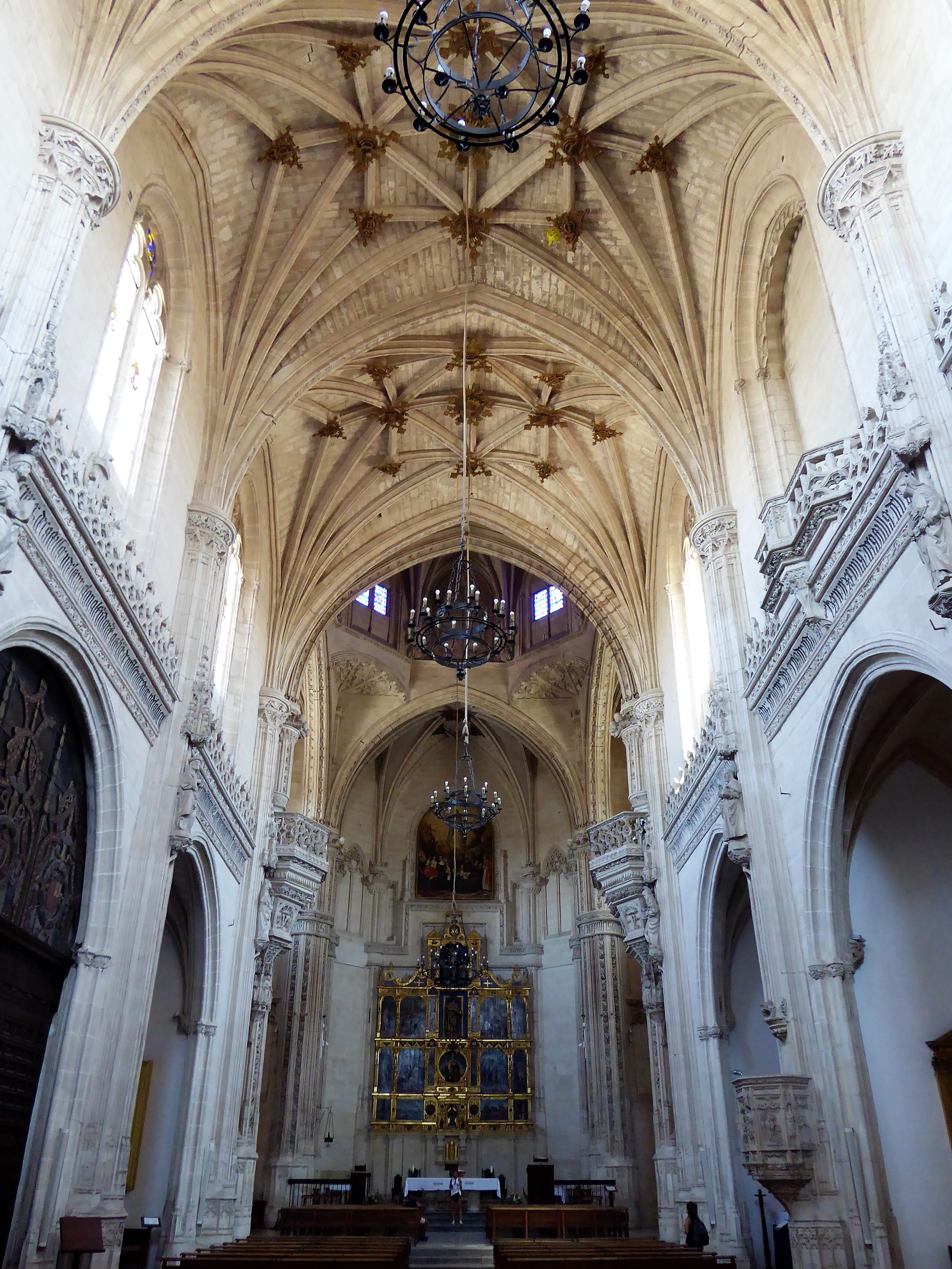

Surprisingly tech savvy for the monastery their audio guide is from a free wifi connection so you can used your phone instead of carrying one of those bulky handheld pieces, first time I’ve seen that, good idea and must be a lot more cost effective.
I can’t pinpoint why I like this monastery and church, the style and architecture is undoubtedly a signature example of Gothic executed perfectly but so have many others I’ve seen. Maybe it is a combination of the understated simplicity at a first glance (whether outside or inside), the style compared to the buildings nearby and the location. I’ve seen many grander monasteries and churches but if anyone asked me what they should see and visit in Toledo I would have to say this should definitely be on the list of must see, there is just something about it. Inside isn’t overdone, they’ve achieved just the right balance of minimalist (not in the Swedish sense ?) and decorated detail; this seems to draw your eyes automatically to that which was most important from aesthetics and political/religious display. As you would expect, much of the stone work represents the Monarchs because of the initial proposed function of the church, these blend into the décor effortlessly and up-close the detail is quite special.
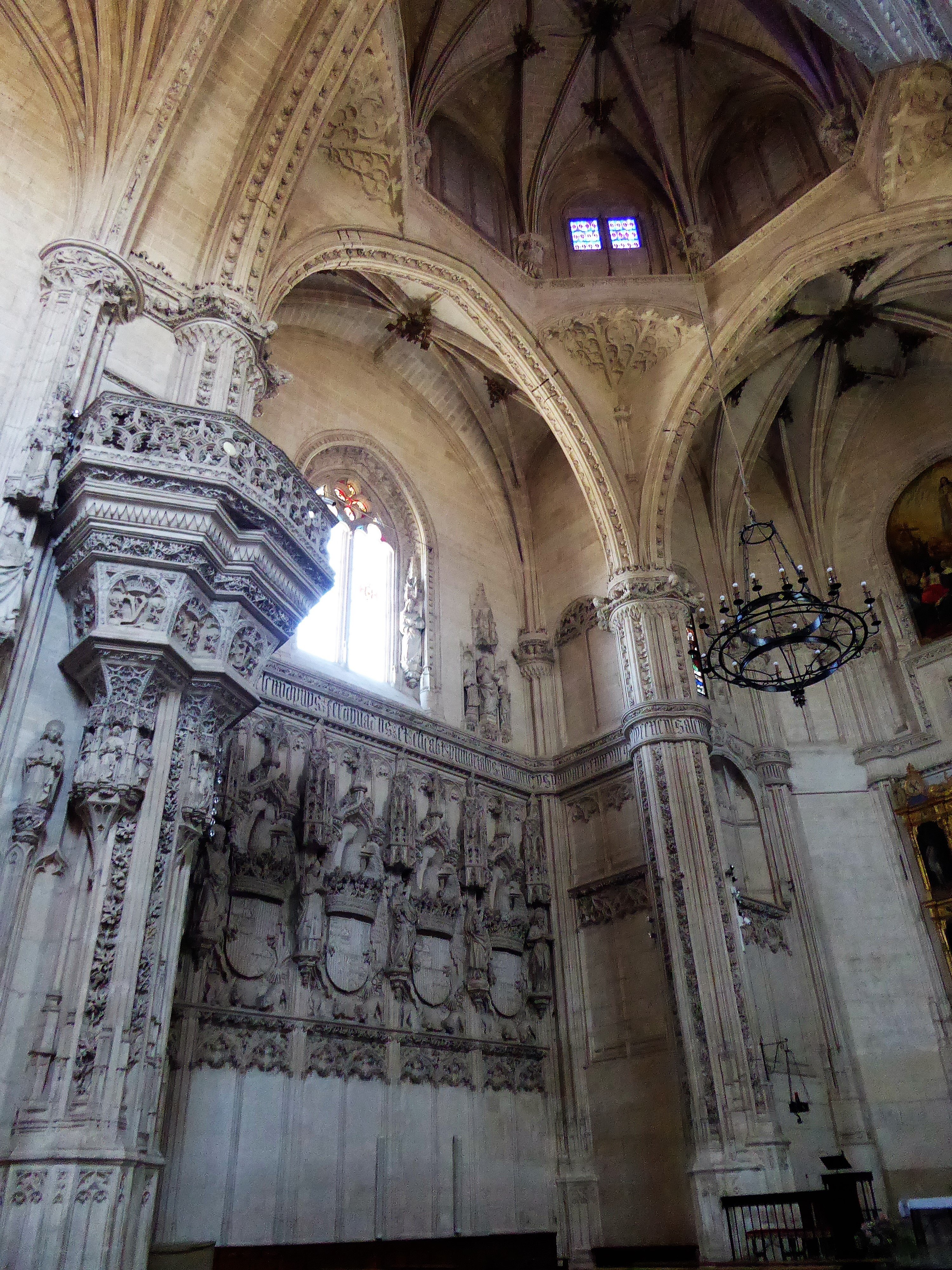
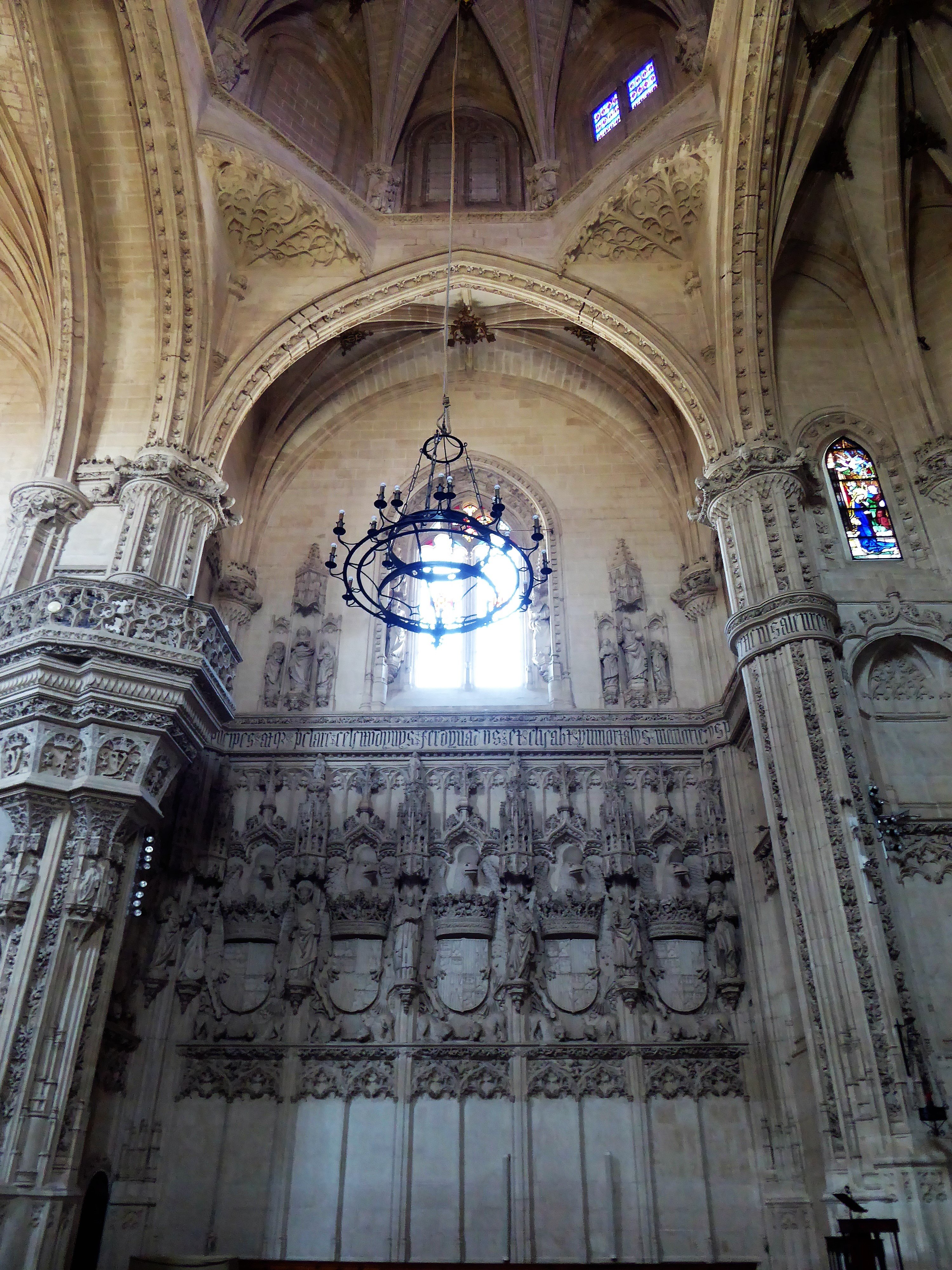
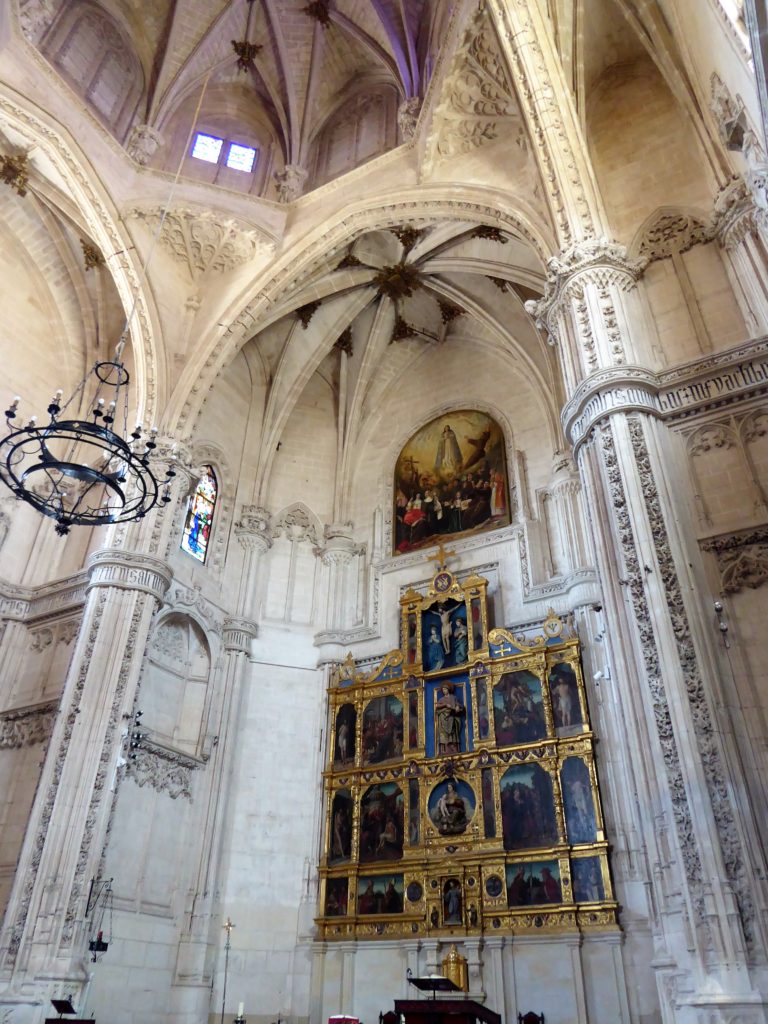
The adjacent cloister surrounds a garden courtyard, the lush rich green shrubs and hedges with flecks of colour from the oranges trees and flowers creates a secluded tranquil getaway. From the passage around the garden looking through archways frame the garden with the church as a magnificent backdrop.


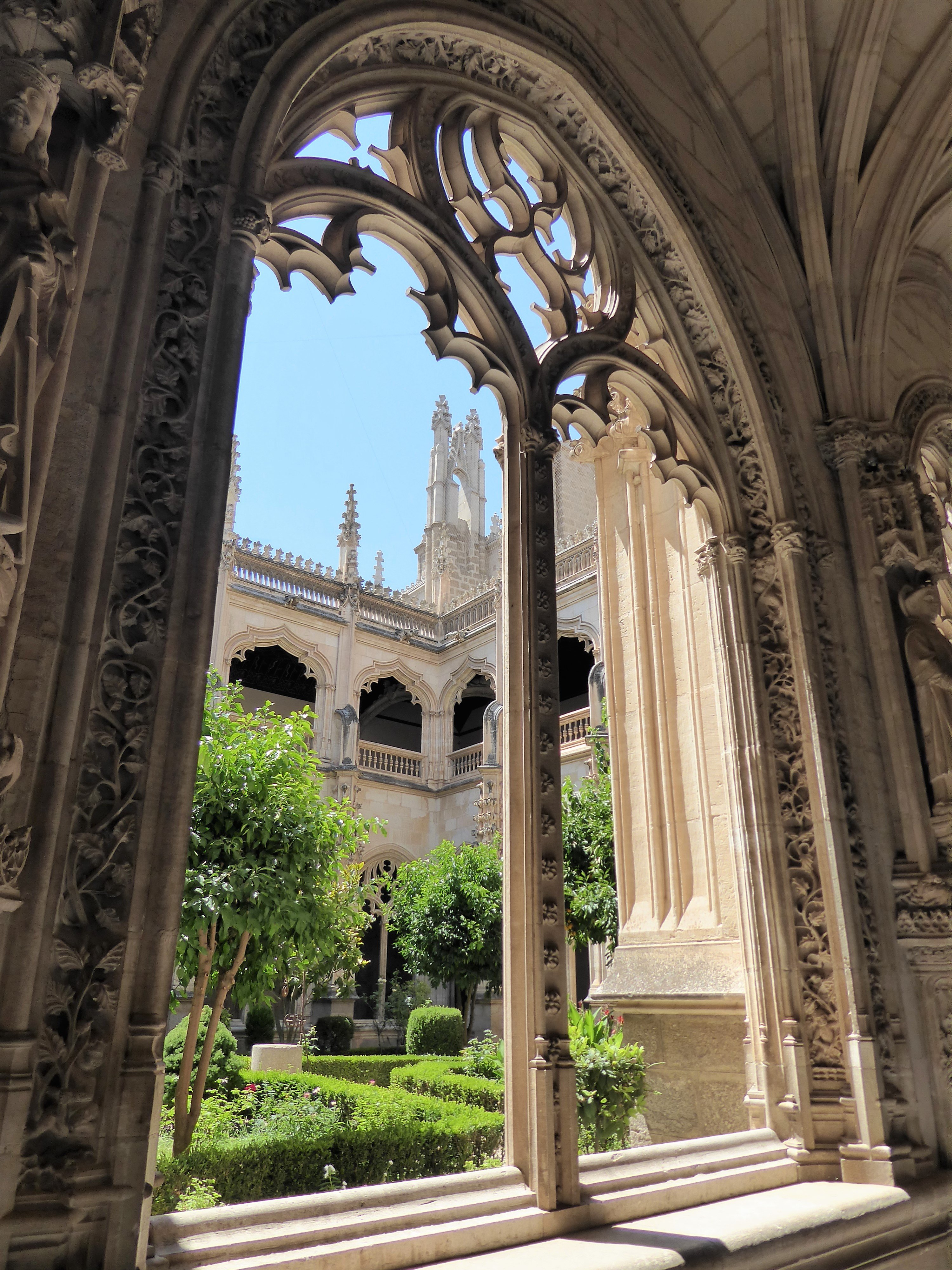

Santa Maria La Blanca / Saint Mary the White / Ibn Shushan Synagogue / The Congregational Synagogue of Toledo
A few minutes’ walk along the cobbled road, (have I already mentioned that all the roads in the historical area have cobbled roads) from Monastery of San Juan de los Reyes is the Santa Maria La Blanca, arguably the oldest synagogue in Europe that is still standing. Built during the Kingdom of Castile you’d think it was a mosque, that’s because the architects were Islamic even though it was purposefully built for Jewish use in 1180, long before the expulsion at the end of the 15th century (Alhambra Decree or Edict of Expulsion). Styled in Almohad architecture it wasn’t used a synagogue for long as it was converted to a church with little alterations at the beginning of the 15th century when its name was changed to Santa Maria La Blanc.
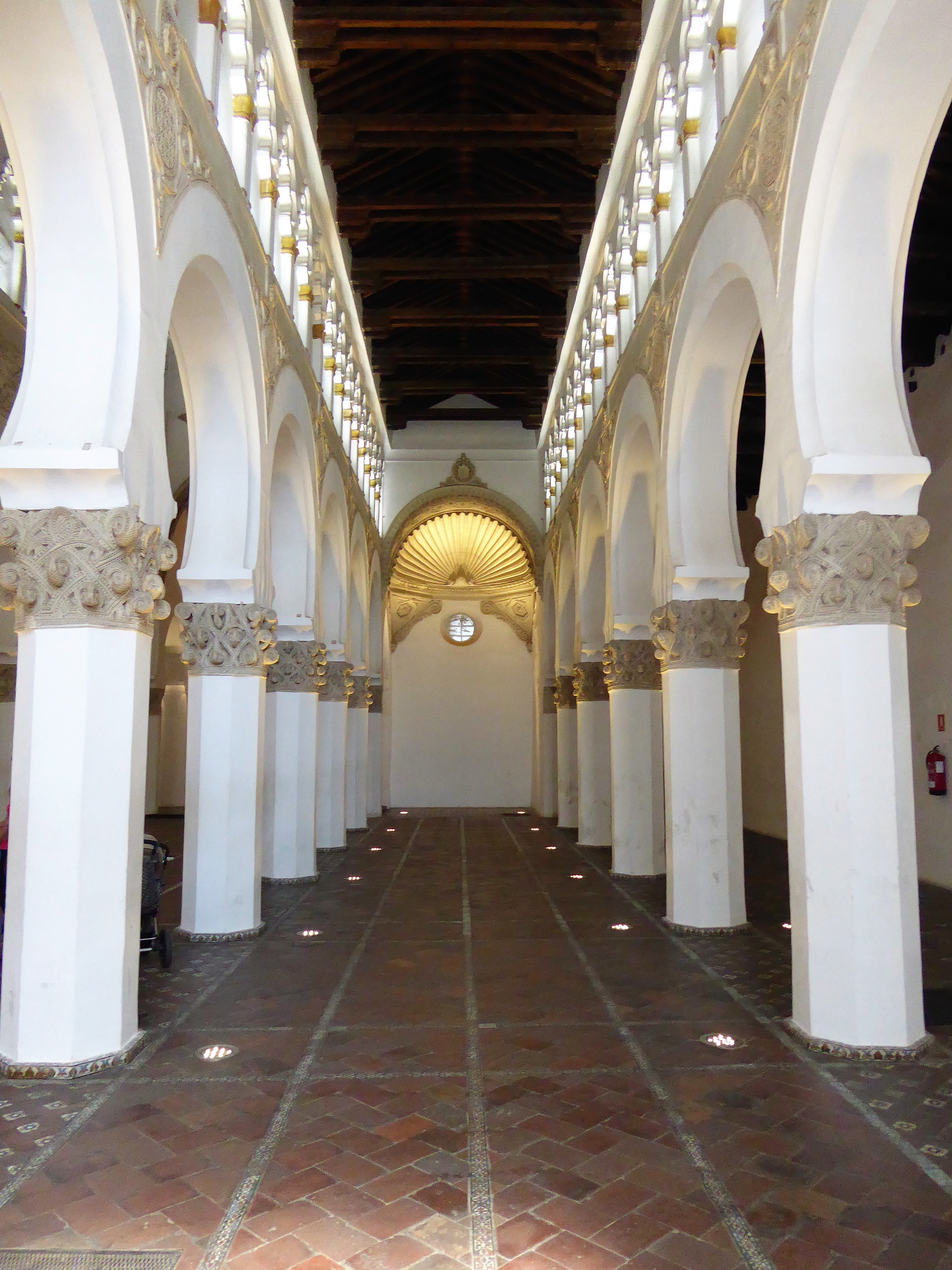
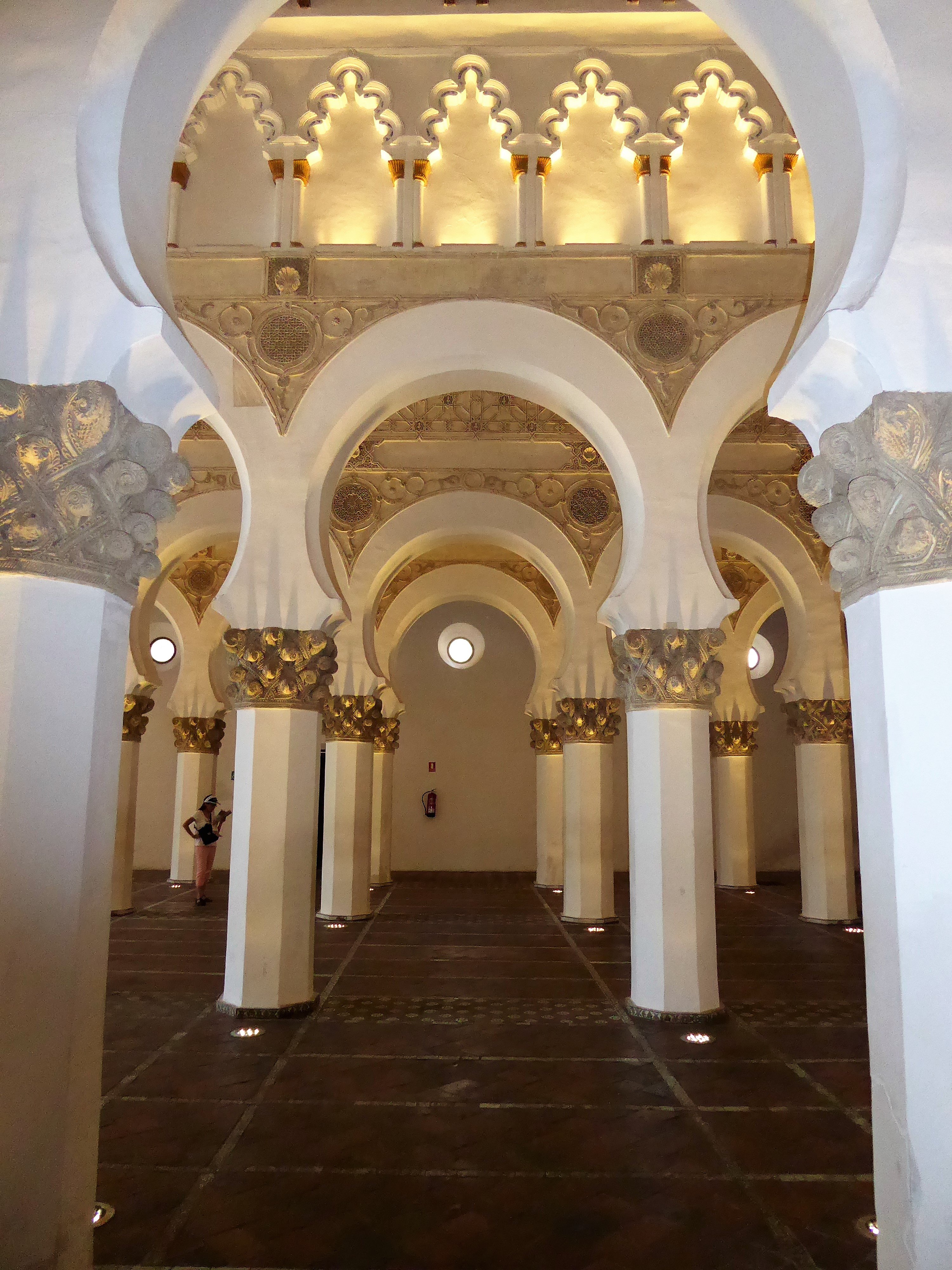
The interior refreshingly cool considering outside was mid-30’s with the white pillars and arches accentuated against the deep brown tiled floor. With the repetitive arches and span of white from the pillars right up to the ceiling creating the feeling of space in a rather small enclosure. Very sparsely decorated, in fact the capitals of the pillars and the arches in their Moorish patterns constitute the vast majority of decoration, except for the ends of two aisles. There the wall and ceiling meet in a clam-shell motif, one modestly still nonetheless strikingly painted as it would have been in subtly gold.
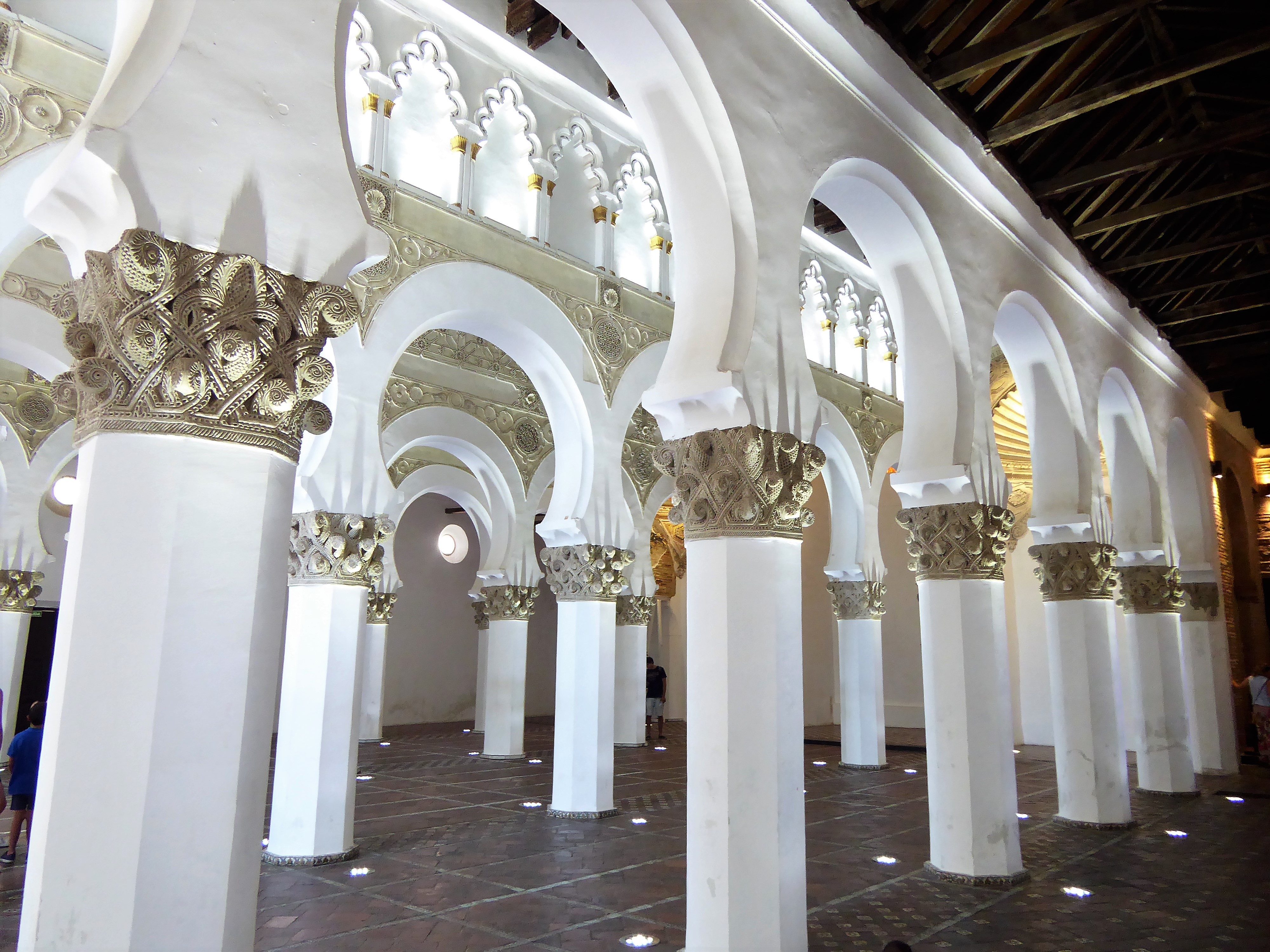
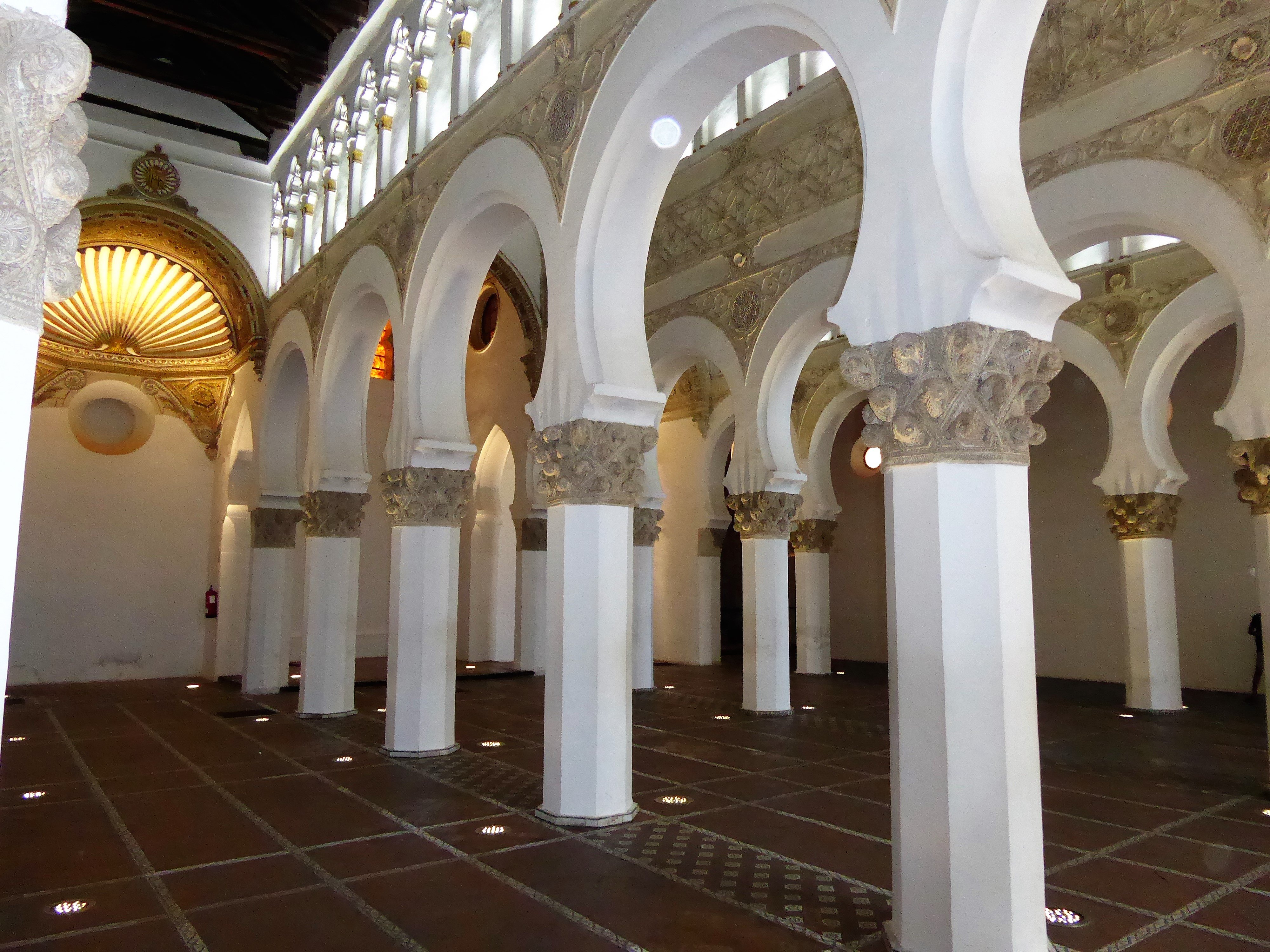
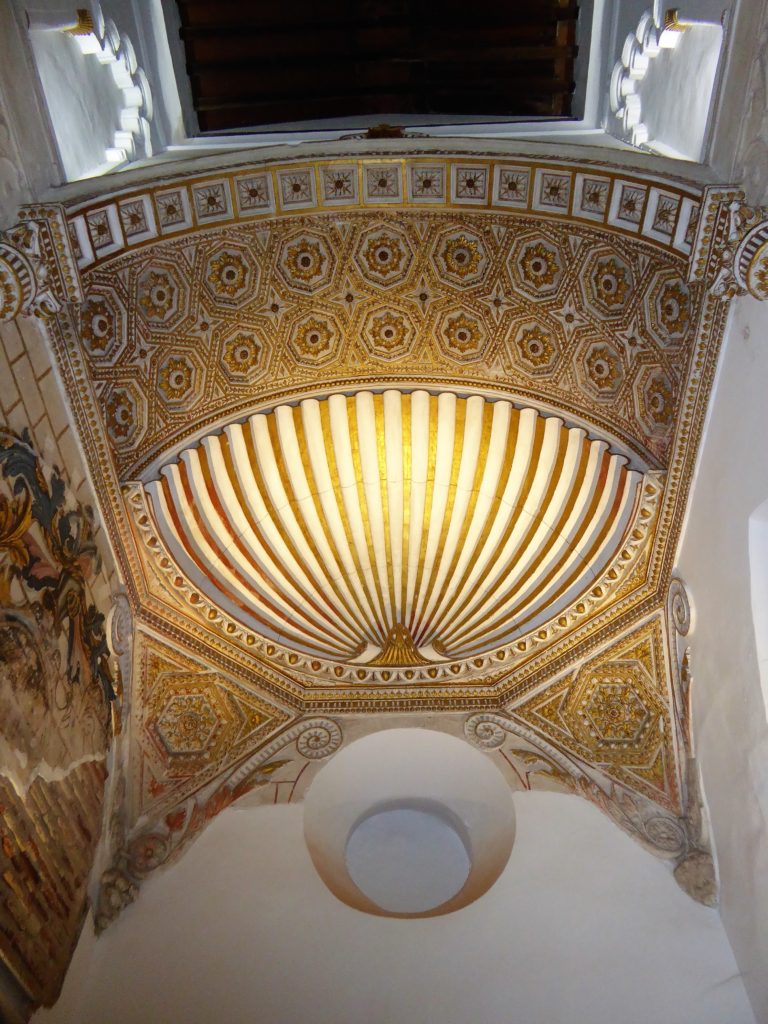
Puente de San Martin / St Martin’s Bridge
From Santa Maria La Blanc you walk downhill to the river to the medieval St Martin’s Bridge. I had been to the bridge the night before as per the picture earlier in this blog, but like I’ve said Toledo in the evening and the day are quite different. The views from the bridge and the bank of the river gave some great perspectives of Toledo. With the water running past at some strength I just wanted to jump in because it looked so invitingly cool and the past few days, well actually the whole time I had spent in Spain to date was bloody hot!

The bridge was built in the late 14th century and other than that I couldn’t find much else about it, other that one of the towers dating from the 16th century. Oh well, even with little to go on you don’t need to know its history to appreciate its setting, construction and views.
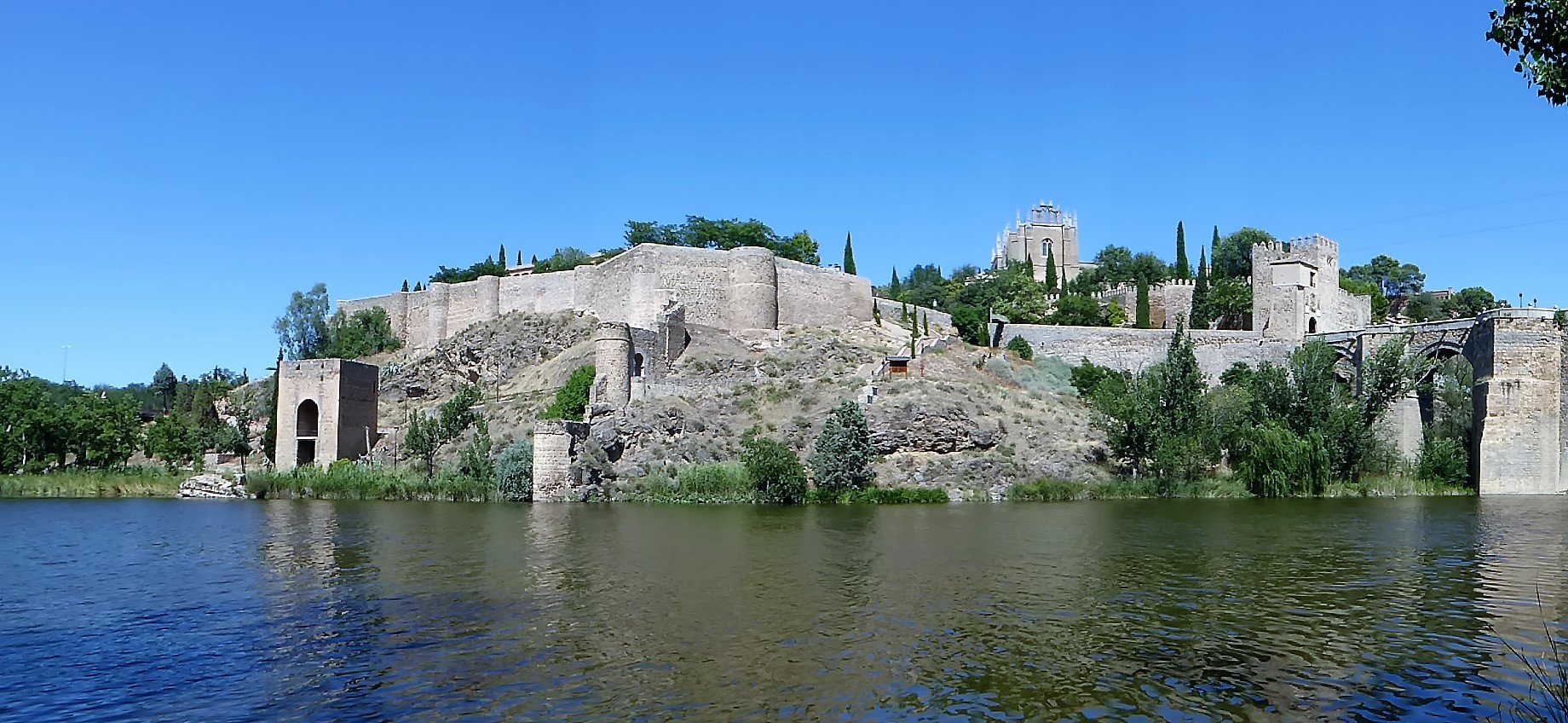
My time in Toledo was almost at an end, the next morning I was heading to Zaragoza via Madrid on the train. One last meander at dusk to satiate my childhood wonders of Toledo now filled with personal memories vivid in my mind for a lifetime, but I sure hope I get the opportunity to return.
Some noted absences from my visit, and trust me I didn’t even get to see half of what Toledo has to offer. Firstly, the El Greco museum; there are plenty of his artworks on display in other locations some of which I have mentioned. Secondly, although I have mentioned taking in Toledo in the evening the Jewish Quarter is particularly special at night. Third, most disappointingly for me is that I didn’t get to see the Roman Circus which is near Hospital Tavera and Puerta de Alfonso VI; marginally excavated so I do hope that if I ever get to revisit Toledo that more archaeological work has been done on it. Fourthly, fifthly, sixthly…….it’s a long list!

If you missed Part 1 of my trip to Toledo take a look at the first list below, the second link was my next stop Zaragoza
